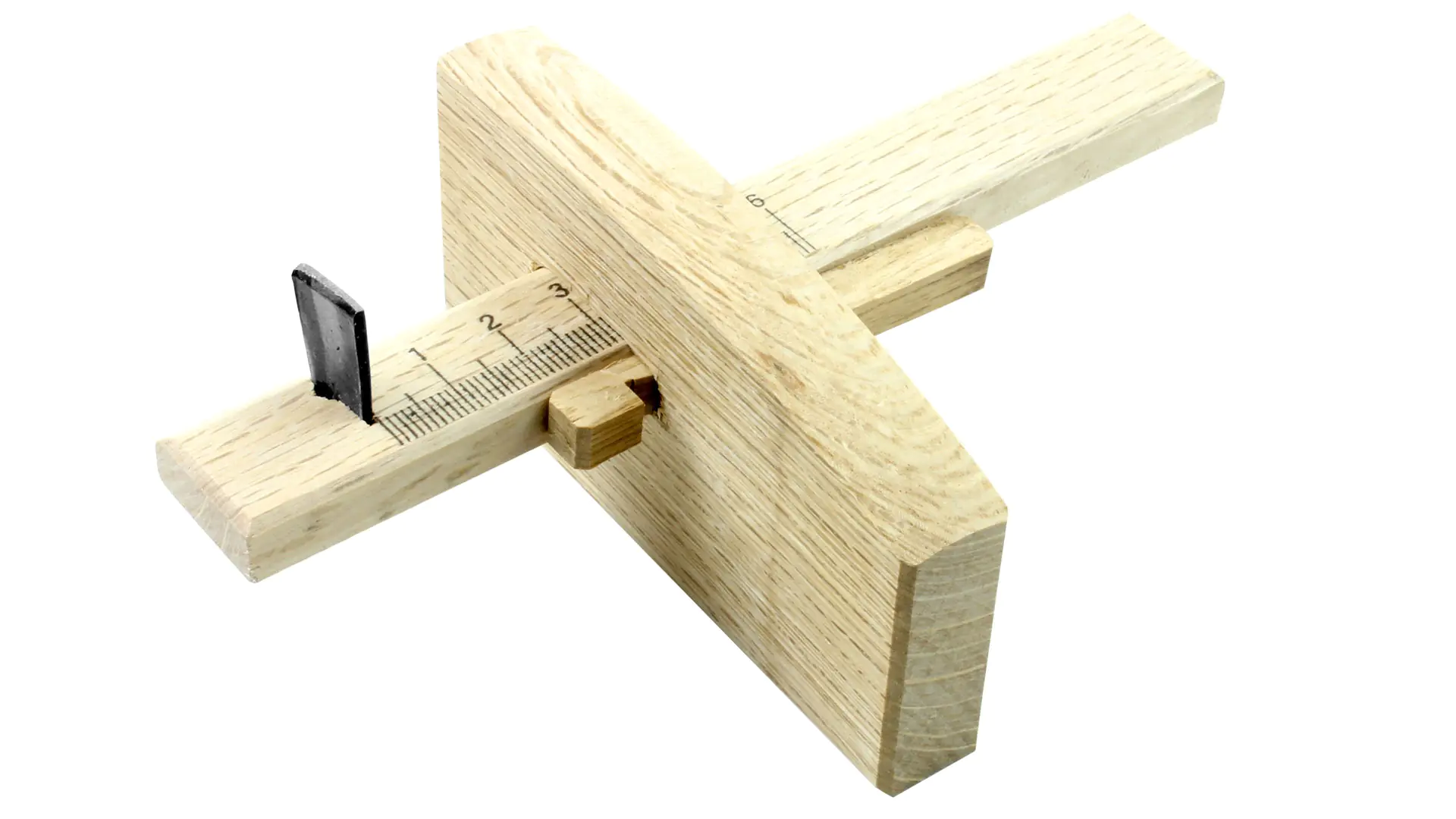Suji Keshiki - Marking Gouge with Scale
60 mm TAKAKATSU
Available, delivery time: 1-3 businessdays within Germany
Product information
Japanese marking gauges are equipped with knives instead of pins and have a relatively wide fence. These small knives have the advantage of being able to score cleanly even across the grain. Knives cut the fiber, while pins merely tear it. Like other Japanese woodworking tools, this one is also used by pulling.
The knife of the Keshiki is ground on one side, with the bevel on the inside, meaning the cutting edge faces away from the fence. In the case of Kama-Keshiki (tenon marking gauges) with two knives, the bevels face each other, while in Suji-Keshiki with two wooden tongues, the bevels are parallel and not facing each other. If the cutting edge does not protrude enough from the slot upon delivery, never attempt to drive the knife in with strong hammer blows, as this may split the wood of the tongue. Rather, slightly enlarge the slot with a needle file or a sharp knife. It suffices if the knife edge protrudes 1 – 5 mm, depending on personal preference. It should not be more than that, otherwise, the marking gauge cannot be held precisely horizontally over the workpiece. Then, gently press the knife in and fix it with only very light hammer taps!
The printed scale should only be considered as a guideline, and the distance from the knife edge to the fence should always be checked with a ruler. Fine adjustments can be made on Keshiki with a wedge by carefully tapping with the broad side of the hammer on the respective ends (end-grain sides) of the tongue. The wedge can be fixed with a firm thumb pressure or, if that is not sufficient, with a light hammer tap.
The fence is held with a wedge
Scale 60 mm
Fence length 90 mm
Marking rod length 152 mm
| Features | |
|---|---|
| Scriber Length | 152 mm |
| Stop | held with a wedge |
| Stop Length | 90 mm |
| Scale | 60 mm |
Login

